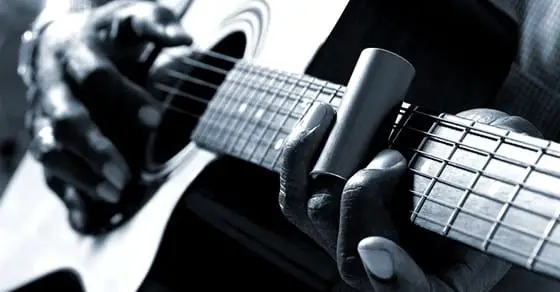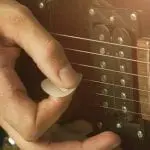Many enthusiasts in the music industry agree that playing side guitar is considered a forgotten art. In fact, you may have also noticed that there are only a few players of this technique these days. For those that do, their goal is usually limited, typically to add a punch to the sound.
One reason for this is because playing slide guitar can be challenging. The right technique should be used in order to maximize this technique. This means the need to effectively use mute strings, and be accurate in the actual positioning of the slide.
The best part is that, once you have mastered the art, it could turn out to be a huge amount of fun, even adding a lot to the type of music that you play.
A slide is described as a device that is specifically used for country and blues genre of music. That’s what many thought, at least. In actuality, it can be used on just any type of music there is.
Choosing the Right Slide
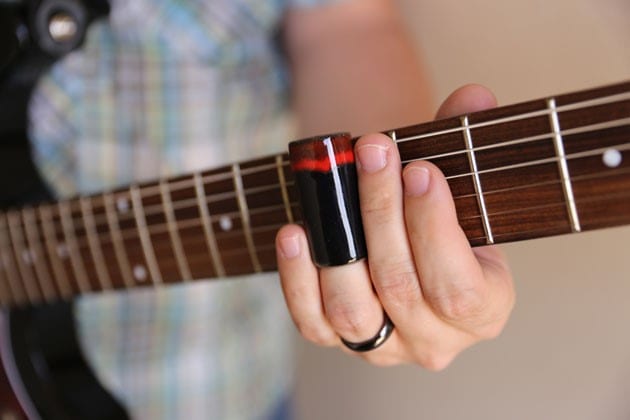
First things first.
Before mastering slide guitar, it is important to have the right equipment at hand. This means choosing the right slide for you and your guitar.
Slides are usually made out of a range of materials and other everyday items. In fact, some have been reported to use painkillers or beer bottles. One of the most famous slide players, Duane Allman, uses a Coricidin bottle for his slide.
Other options include brass, steel, glass, as well as carbon fiber slides of different shapes, sizes, and weights. They all offer a different tone, and may also need a different method to use.
Even though brass and steel slides are more common, with the tendency to offer a thick and nice tone, they may also be more difficult to play and control because of their weight. For this reason, only experienced players can work with artifacts and unwanted noises with their unique technique.
Beginners are recommended to get and practice using a glass slide. For one, you can get them cheap. They are also somewhat forgiving when it comes to unmastered techniques. They can even be used on guitars with different levels of action.
Setting Up Your Guitar for the Slide
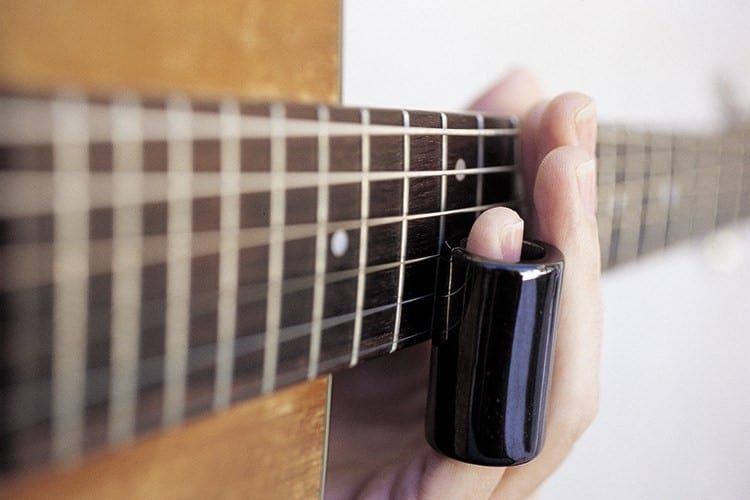
Side playing enthusiasts usually have multiple guitars. Usually, they set aside several axes, particularly for slide playing. However, if you do not have multiple guitars, with only a basic steel-string acoustic guitar on your hand, there might be no need for you to make any adjustments to it.
If you only have a classical guitar, you may want to get another guitar that you can use with a slide. The good news is that there are a number of affordable options on acoustic guitars that you can purchase. You can also bring your axe to a guitar expert and have it prepared for heavier strings and higher action. This is an affordable way to deal with the issue of the action, which may be to law.
How to Use a Guitar Slide
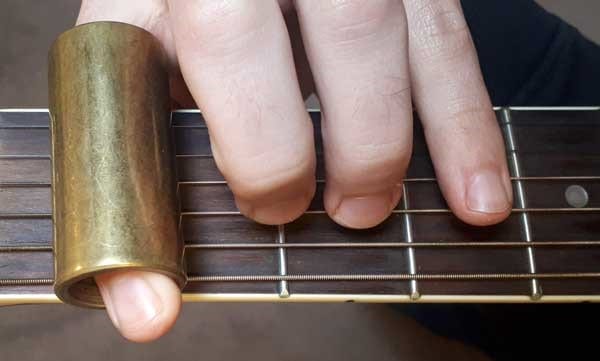
Since the slide will go on your fretting hand, there is no need to change much of your picking hand technique, only your fretting hand technique.
The very first thing that you need to decide on is which finger to put your slide on. Many players put their slides on their pinky, middle, or ring fingers. This may simply be based on preference, s well as how important it is for you to still be able to put other fingers in use.
Using your middle finger offers balance and strength, with muting done easier. However, it may be challenging for you to move other fingers when you have to, especially your pinky. On the other hand, using your pinky for the slide will free other fingers. However, it may be difficult to control the slide and effectively mute the strings.
For some, the ring finger is the best option for them. Even though it may not offer the balance and strength offered by the middle finger, it gives the best control, with muting done easier as you can easily squeeze the slide in between the middle and pinky fingers.
Regardless of the finger, you plan to use; the goal is simply to close the gap in between the string and the fretboard using your fingers. When enough pressure is applied, the gap is closed, which means that you can now achieve a clean and sounding note out of your guitar.
When using a slide, avoid applying too much pressure. As a matter of fact, what you only need is the right balance. The higher the action of your guitar is, the more pressure you can remove. With a slide, your fingers need to be pointed upwards, parallel to the guitar frets.
Applying the right amount of pressure in the right locations using your slide may also prove to be challenging. Still, it is important, since you may not be able to get those clean-sounding notes if you do not.
Playing Your Guitar with a Slide
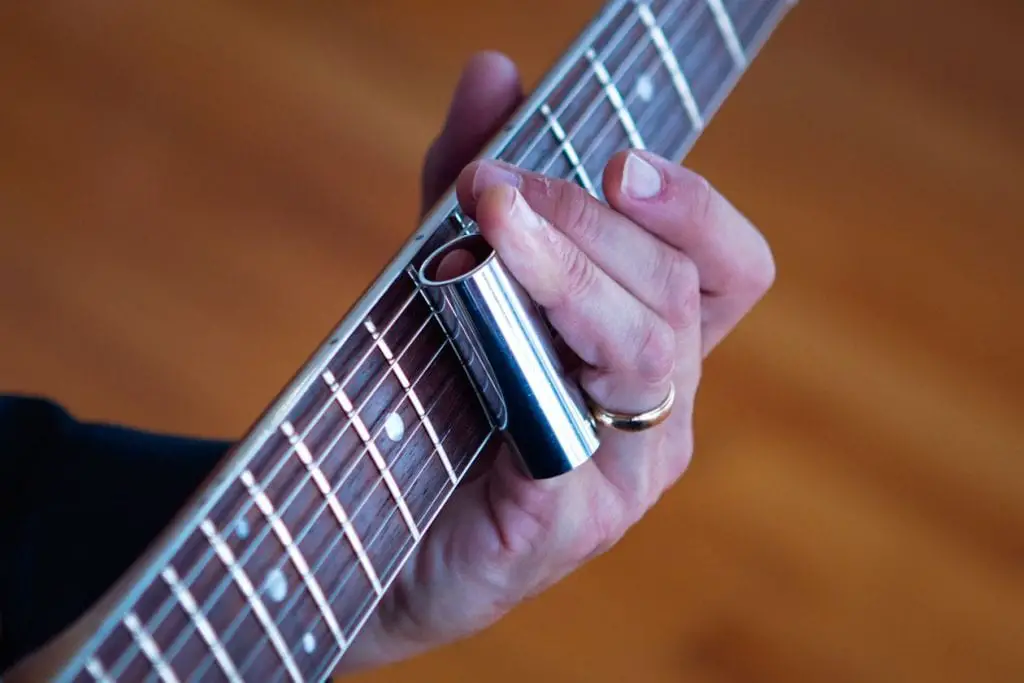
When it comes to playing your guitar with a slide, it is important to place the slide on the right place of your guitar in order to achieve the best possible sound. Your slide should rest above the strings gently. Pressing it too hard will just get you nowhere while applying zero pressure will only mute up the springs.
The slide also needs to go right above the frets, instead of between, like in regular fretted notes. A slide works by turning a basic guitar into a fretless instrument. This means that it is possible to get all of the 12 notes on the west scale, and out-of-tune variations in between. Unless the positioning is appropriate, you may be out of tune.
Still, as suggested by the name of this technique, the concept is to “slide” from a note to another. For instance, if you start on the third string and fifth fret of C, and you need to slide to the third-string and seventh fret of D, you will directly place your slide on top of the fifth fret, choose the note, and slide up again to the seventh fret without the need to lift your hand or pick again.
After some practice, you will eventually get familiar with the movements of sliding your fingers up and down the fretboard, crossing through different notes. These are the basic moves. Now, you need to learn how to master it.
Techniques to Master Playing Slide
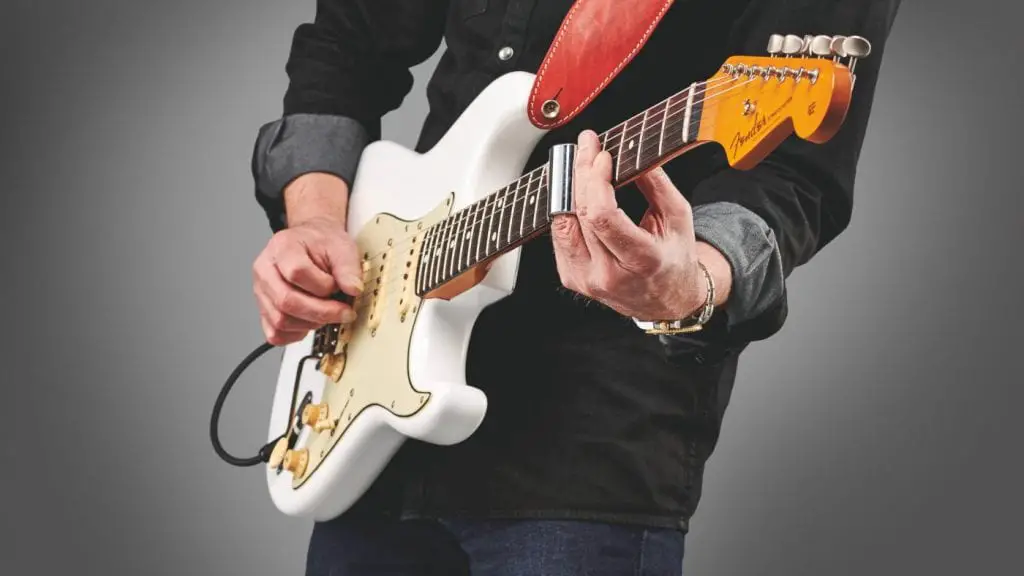
In order to master this technique, there are basic things that you need to master. After learning all of these, you can easily mix and match them according to your preferences.
Sliding Up
As the name suggests, you need to place your slide on top of the fret that you want to start at, choose the note, and slide into a different note on the same string. Stay focused on the target note as you continue to slide up. Keep in mind that you can actually slide quickly or gradually into the note, depending on the note that will sound perfect for the song you are trying to play.
Sliding Down
The exact opposite of sliding up, this technique requires you to start at a higher fret and sliding down to a lower fret.
Multiple Strings
Since your slide is pointe upwards and parallels to the frets, playing different notes across different strings on the same fret is somewhat easy. This also applies to standard tuning, making it convenient.
Vibrato
When playing vibratos in the absence of a slide, you only need to rotate your wrist, or pull-or-pull the string using your fretting finger. However, with a slide, playing is similar to that of a tremolo technique but different from tremolo picking.
To complete a vibrato using a slide, the slide should be moved horizontally, left and right, and around the fret wire.
Hammer On
With hammer on, the technique becomes somewhat trickier. You can easily play any open note, “hammering” down at a relatively higher fret on a similar string, in order to create a sound produced by the hammer-on technique.
The difference, though, is that you have to be a bit gentler with your technique since you are not really closing the gap between the strings, as well as the fretboard with your slide.
Pull-Off
Pull-off is a reverse of the hammer-on technique, involving the need to play a note using your slide, pulling it off on an open note. This technique is quite challenging to perfect, which means that you need to take some time practicing it.
Conclusion
You may already know how to play the guitar, but slide guitar even adds spice to your playing. Once you have mastered the techniques of playing slide guitar, you can then work on changing the effects, your style approach, and choosing a different pickup setting, even changing the instruments and guitars in order to keep the variety of the soundscape and the audience hooked.
A slide is a tool that can be used in creating more variety in your playing. If you have a country, blues, folk, or bluegrass songs in your favorite list, this is the best time to use a slide.

